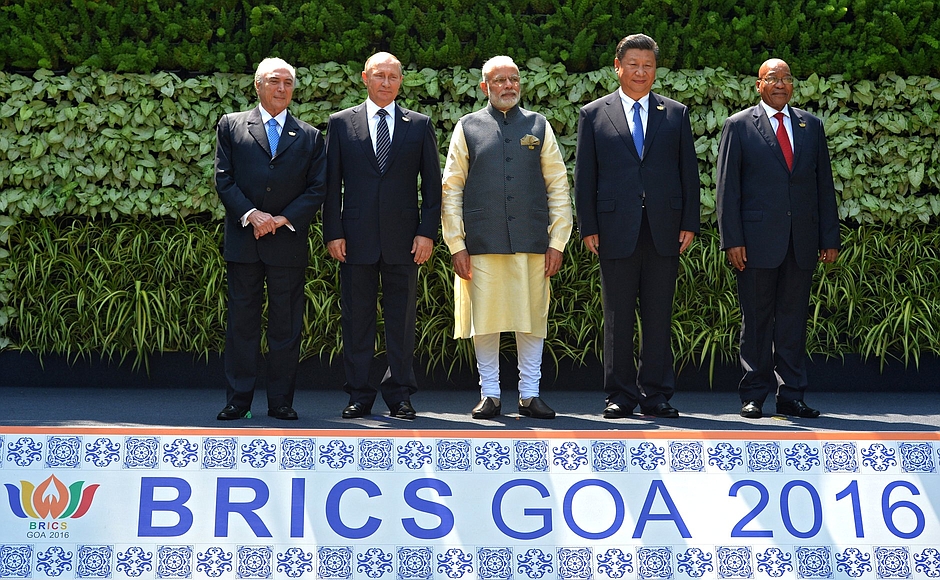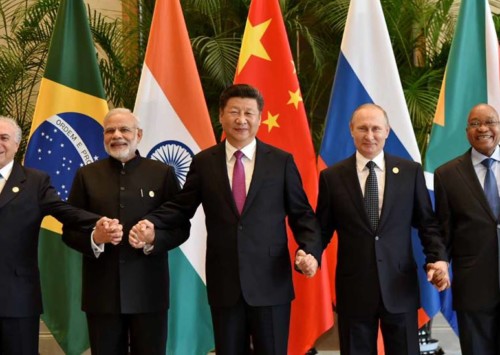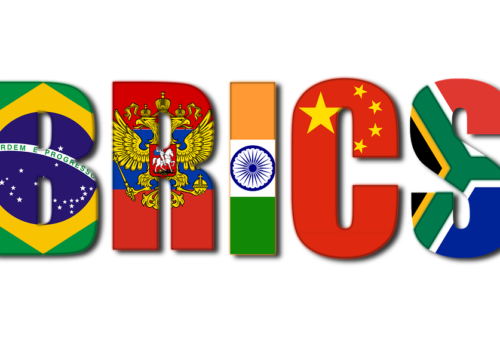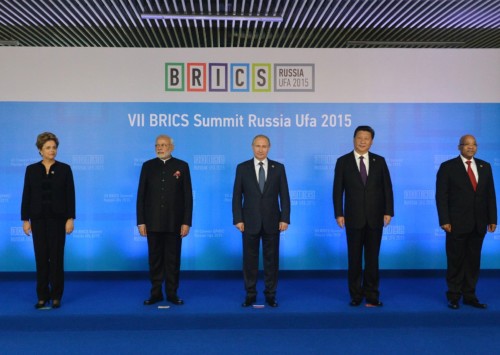BRICS 2016 Summit sees modest results
Biz@India

The 8th BRICS (Brazil, Russia, India, China, South Africa) summit, organised this weekend in Goa, India, has not recorded any significant results in order to develop the political and economic cohesion of this group of countries that is still very disparate and often having divergent if not conflicting interests. India, the host country, however, pushed forward its own agenda on a bilateral level, notably with Russia and Brazil, and played a pivotal role there.
Leaders of the major emerging economies of the BRICS (Brazil, Russia, India, China, South Africa) grouping, that already weights 30 pc of the world output, met on Saturday and Sunday in Goa, on the western coast of India, to go proceed on multiple key dossiers. But beyond general statements on the world economy and on terrorism, the harvest was modest at best.
The five countries have notably failed to find common ground on two big issues: the creation of a credit rating agency by the BRICS and the modalities of cooperation between the New Development Bank (NDB), the bank of the BRICS, and their national banks dedicated to the coordination with this new institution headquartered in Beijing and chaired by an Indian, KV Kamath.
Both initiatives aim to develop the potential of the BRICS and their institutions as an alternative to a global financial order still dominated by entities such as the International Monetary Fund (IMF) and the World Bank (WB), largely under the control of the so-called developed countries- the United States, the European Union members and Japan – in terms of voting rights, even if the BRICS’ voting rights at the IMF and the WB were – modestly – increased in recent years.
The BRICS rating agency is a project dear to the Indians but about which the Chinese have expressed reservations, to the extent that this structure would be backed by the US, while the most influential global rating agencies, such as Standard and Poor’s or Moody’s, are independent private entities. Discussions continue about two key related topics: the way to ensure the credibility of the institution and the process to organize the data it will analyse.
The New Development Bank, effectively launched last year, is also moving ahead rather slowly. It intends to collect in a year an incremental revenue of EUR 2.27 billion to fund initially projects in green infrastructure and sustainable development, according to its chairman, KV Kamath, a former influential private banker in India and an ex-chairman of Indian IT giant Infosys.
As far as declarations of good intentions are concerned, the BRICS, which account for 43 pc of the world population and 17 pc of international trade, intend to intensify their exchanges to reach the threshold of USD 500 billion by 2020. They pledged to do everything possible to revive a very sluggish global growth through a combination of monetary and fiscal policies and appropriate structural tools. This remains nonetheless a rather vague statement, as Brazil and Russia are struggling to emerge from recession, as South Africa is experiencing a slow growth and as China’s growth is decelerating. Only India pulls out of the game with over 7 pc annual growth.
The Indian agenda
India was also successful in putting forward its own agenda during this summit. The BRICS, in their ‘Goa statement’, have clearly expressed their opposition to terrorism, even if they have not made mention of ‘cross-border’ terrorism as India had wished. Never mind, the Indian Prime Minister Narendra Modi, on his part, said, “In our region, terrorism poses a grave threat to peace, security and development,” adding, “Tragically, the mother-ship of terrorism is a country in India’s neighbourhood,”referring to Pakistan without naming it,the territory from which armed incursions in India have been recently conducted by militant movements, generating a strong regional tension.
India also used the BRICS summit to advance bilateral ties with Russia –the first defence equipment supplier to India and historically a long-time partner –by signing several large contracts, notably one for the long-range defence missiles systems, S-400 Triumf, worth over EUR 4.5 billion (Link). Besides, in another sector, Indian Ruia powerful business family has agreed to sell 98 pc of Essar Oil and a port terminal at Vadinar to a consortium led by Russian oil giant Rosneft for around USD 13 billion, making it the biggest foreign acquisition ever in India.
New Delhi has also strengthened its bilateral relations with Brazil, particularly through four Memorandums of understanding (MOUs) in agriculture and genetic resources, pharmaceuticals products, genome and technologies related to reproduction, and finally investment facilitation.
Actually, even if Beijing and New Delhi are developing their joint military exercises and trade relations, the main obstacle to a faster development of the BRICS integration, at least politically, remains the divergent interests of its member countries and in particular the ones between its two Asian powers.
The NSG and the water issue with Beijing
Beijing, a close ally of Pakistan, has not yet green-lit India’s entry in the Nuclear Suppliers Group (NSG) which it already vetoed, inflicting in recent months a diplomatic snub to India.
Also, China has repeatedly blocked India’s request for Jaish-e-Mohammad leader Masood Azhar to be designated as a terrorist by the United Nations. New Delhi hold Azhar responsible for several deadly attacks on its territory, including those on the Indian Parliament in December 2001 and, last January, at the military base in Pathankot, Punjab.
For its part, Beijing sees India as an increasingly close ally to the United States, and dislikes notably the fact that New Delhi plans to provide the US a greater access to its military bases.
In this tense regional context, the issue of access to water resources could become a new topic of serious disputes between India and China. Beijing intends to fully use the hydroelectric resources of the Brahmaputra river, for instance via its Zhangmu dam, in Tibet, which would reduce the available flow of water downstream, in India.
The BRICS already form a solid potential wall in the global architecture of international relations but they desperately need to iron out the creases and cement a cohesive alliance, to really enhance the coherence of the grouping.












